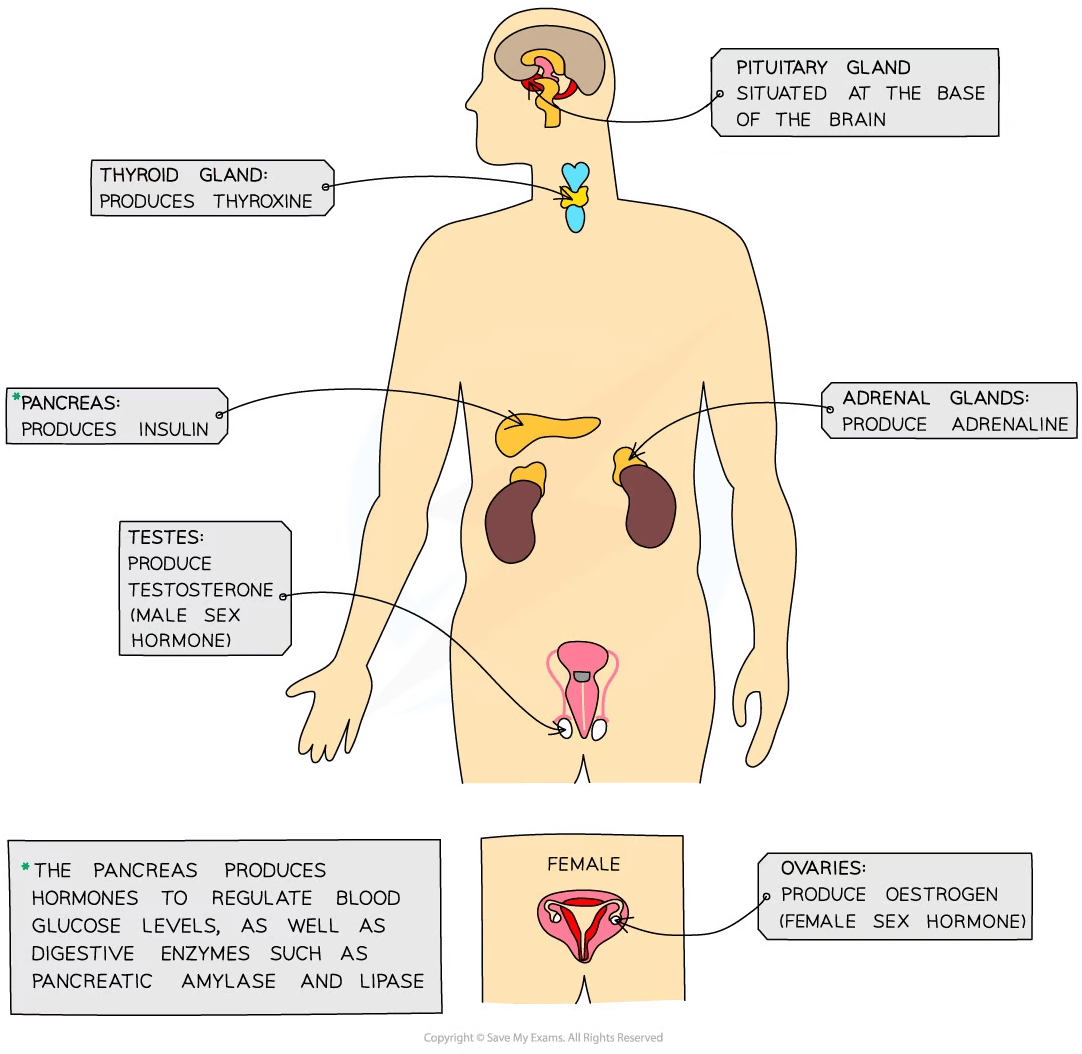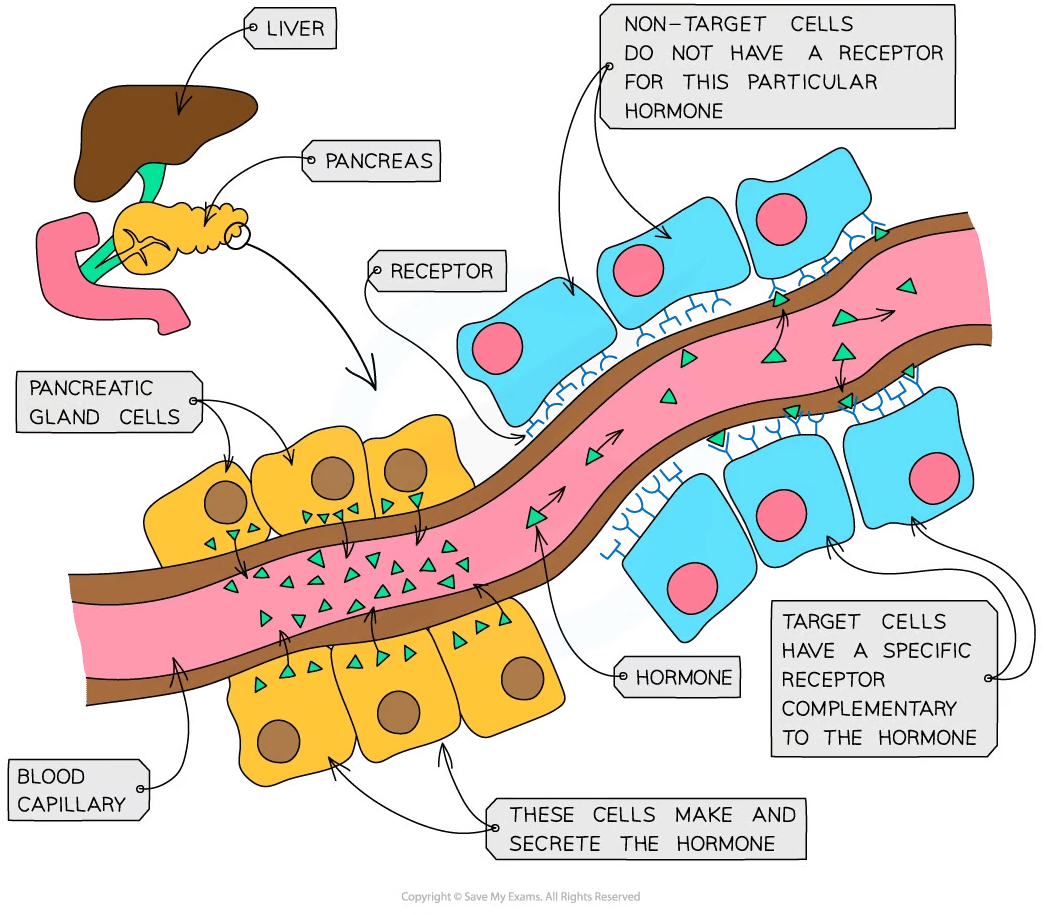The Endocrine System (Cambridge (CIE) A Level Biology): Revision Note
Exam code: 9700
The endocrine system
A hormone is a chemical substance produced by an endocrine gland and carried by the blood
They are chemicals which transmit information from one part of the organism to another and bring about a change
They alter the activity of one or more specific target organs
Hormones are used to control functions that do not need instant responses
The endocrine glands that produce hormones in animals are known collectively as the endocrine system
A gland is a group of cells that produces and releases one or more substances (a process known as secretion)

Hormones such as insulin, glucagon, ADH and adrenaline are cell-signalling molecules that are released into the blood
Endocrine glands have a good blood supply because, when they make hormones, they need to get the hormones into the bloodstream (specifically the blood plasma) as soon as possible so they can travel around the body to the target organs to bring about a response
Hormones only affect cells with receptors that the hormone can bind to
These are either found on the cell surface membrane or inside cells
Receptors have to be complementary to hormones for there to be an effect
Hormones such as insulin, glucagon and ADH are peptides or small proteins
They are water-soluble and so cannot cross the phospholipid bilayer of cell surface membranes
These hormones bind to receptors on the cell surface membranes of their target cells, which activates second messengers to transfer the signal throughout the cytoplasm
Hormones such as testosterone, oestrogen and progesterone are steroid hormones
They are lipid-soluble and so can cross the phospholipid bilayer
These hormones bind to receptors in the cytoplasm or nucleus of their target cells


Unlock more, it's free!
Did this page help you?